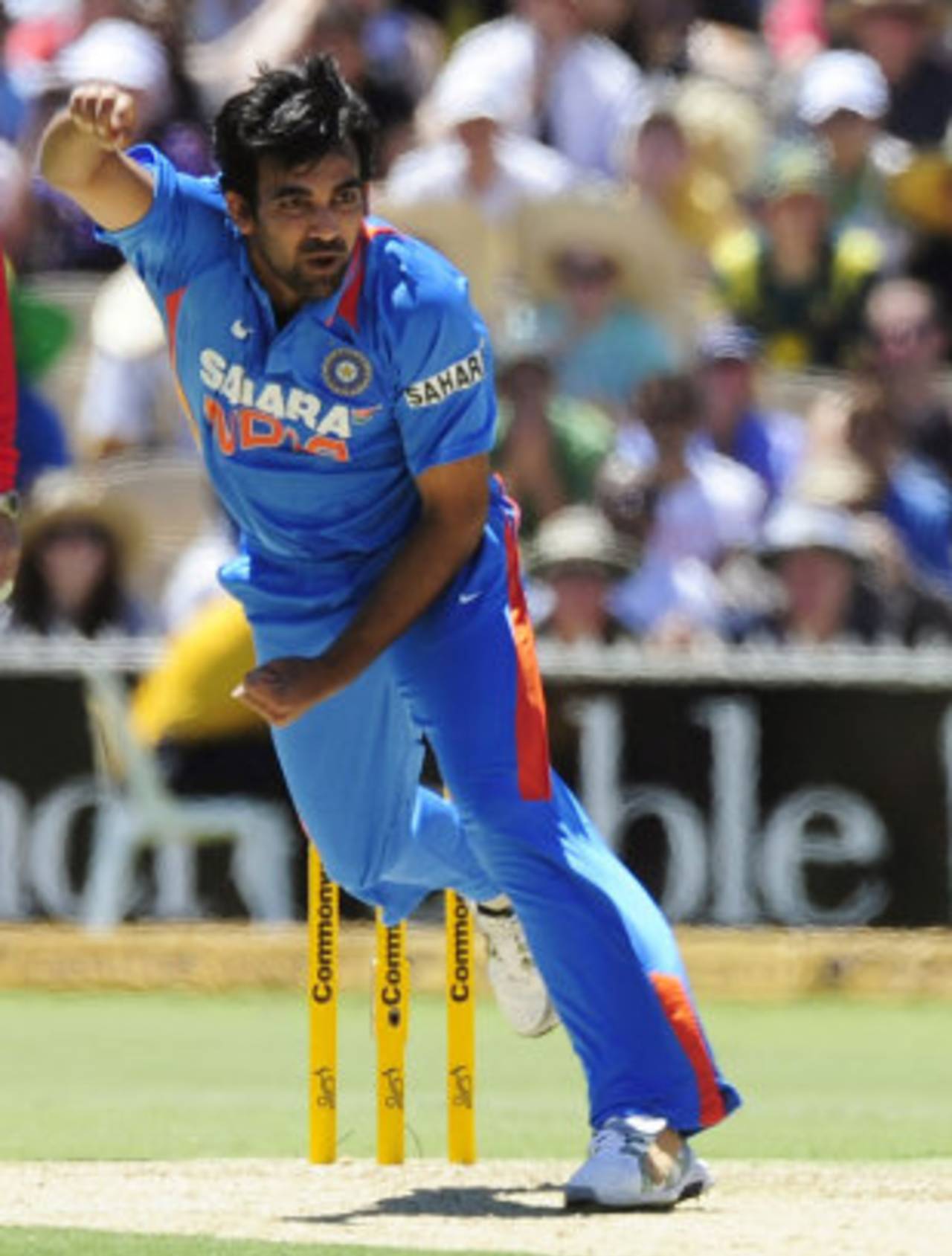A thick layer of fog wrapped itself around the ground in Mohali. Since the teams had arrived, every morning had worn a dim look, forcing play to start well after the scheduled time. Even when the light had improved sufficiently for the match to get going, it remained fairly overcast through the day. Biting cold made it impossible to move the limbs with freedom. The batsmen fretted over the unusually green pitch and the moisture underneath. This was a
North Zone v West Zone Duleep Trophy match in January 2001, the first time I saw
Zaheer Khan in action.
He ran in very hard, bowled with a lot of purpose and generated disconcerting speed. While every other bowler in the match focused on posing questions based on swing and seam, Zaheer seemed more interested in hurrying the batsman. He would regularly hit North Zone's batsmen on the head, but he was the bowler that batsmen preferred to face. There's a saying in cricket, whatever doesn't get you out, doesn't bother you much. While Zaheer bowled the fastest, his team-mates Iqbal Siddiqui and Santosh Saxena bowled smarter, in the right areas, and picked up wickets.
Back then, Zaheer was a one-dimensional bowler who would only take the ball away from the right-hand batsman. While an away swinger at great speeds can be tough to handle, in the absence of an inswinger, it is just not as lethal. After a little while he became a little too predictable. To counter him, one could leave balls pitched in line with the stumps alone, for the angle always took them away from the stumps. To finish within the stumps, he would have to bowl outside leg - which would be largely pointless. If you got used to the pace, were prepared to get hit a few times (his bouncer was always aimed the head) and play the lines, you were largely safe.
Still, given that any bowler who can consistently clock 140kph with some degree of control has a fair chance of success, Zaheer, till 2006 in international cricket, was effective if not lethal.
In a bid to refurbish his bowling, he took a trip to England for a stint with Worcestershire. He returned a completely changed bowler. He ran in a lot slower, which allowed him more control at the time of release. He cut down a yard or two on pace, which allowed him to bring the ball back into the right-handers in the air and off the surface.
To achieve optimum swing and control with the new ball, you have to bowl at about 85% of your top speed. The new Zaheer operated in the early 130s but swung the new ball appreciably. Bowling hundreds of balls in county cricket had also helped him identify the right lengths to operate with - in this case, a little fuller than his previously preferred length.
While dropping pace spells doom for many bowlers, it worked wonders for Zaheer, for he added many more tricks to his bag in the bargain. The years following his county stint were his most productive in international cricket. In fact, he was one of the main reasons for India's good showing in Tests and ODI, at home and abroad, in that period. While Yuvraj Singh was the Man of the Tournament in the World Cup in 2011, credit must also be given to Zaheer for being the chief architect of India's victory, for he provided breakthroughs almost every time he bowled.
Following that tournament, though, there has been an alarming decline in Zaheer's form. Even though he was India's highest wicket-taker in Australia, it was quite evident he was not bowling at his peak. The first indication was his over-dependence on the new ball for his wickets: he would remove the openers cheaply but then had to wait for the second new ball to strike again.
While Zaheer hasn't lost his knack of making the new ball talk, it's his proficiency with the old ball that's leaving a lot to be desired. It could be either form or fitness. I'm tempted to go with the latter because a bowler's skills aren't as dependent on form as in the case of batsmen. Also, if it was a sudden loss of form, Zaheer would have struggled as much with the new ball as with the old, which is not the case. Bowling effectively with the old ball requires a lot more effort than bowling with the new ball, which lends credence to the theory that his fitness is letting him down.
Another indication of a decline in his fitness is that he isn't bringing the ball back into right-handers that often anymore. Doing that demands a lot more effort from the back and hamstrings. When you don't give a delivery everything, it usually just holds its line and doesn't come back in.
When Zaheer opted to run in a lot slower (after his county stint) in search of more control on the crease, he also cut down on his follow-through drastically. This change didn't bother him much because his back, hamstring and upper body were strong enough to generate pace without much momentum, but the moment his fitness dropped, injuries began to take their toll.
There is no doubting that Zaheer is India's best fast bowler after Kapil Dev. At 33, his best years might be behind him, but he is far from over. At the moment he finds himself at a crossroads in his career. There are two ways to regain past glory: he could either double the number of hours he's dedicating to his fitness, or he could cut down the number of matches he plays.
Former India opener Aakash Chopra is the author of Out of the Blue, an account of Rajasthan's 2010-11 Ranji Trophy victory. His website is here and his Twitter feed here
